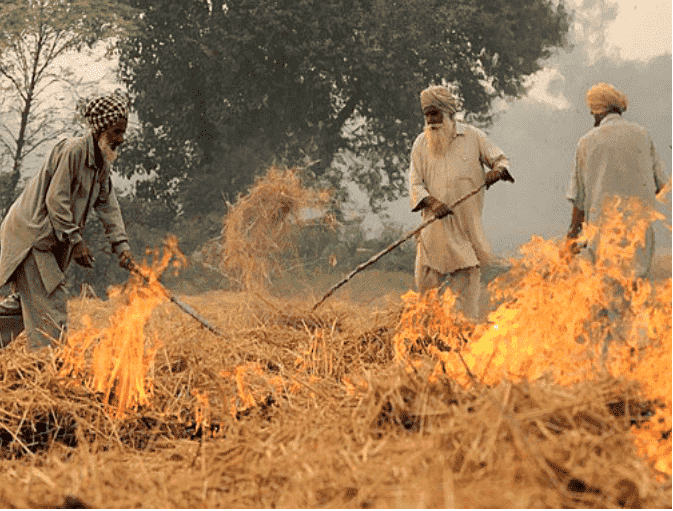
Efficient substitiutes for stubble burning are available, and policies have been formulated, but the cases of stubble burning still continue. To prepare the soil for sowing in the rabi season (October-March), farmers clear their fields of residual stalks and stubble by burning them directly in the field. This method is cheap, convenient, and quick. When harvesting is done manually, the stubble is completely cleared. But the combine harvesters leave around 15 cm high stubble as residue, which is then burnt by farmers. The states of Punjab, Haryana, and Uttar Pradesh, bordering Delhi, report the most cases of stubble burning in the country. Earlier, the Centre had submitted to the Supreme Court that stubble burning in October and November 2021 had contributed 30-40% to Delhi’s PM 2.5 count – a measure of air quality – and a total of 77,000 such cases were reported, the highest in the last four years. According to the Ministry of Agriculture and Farmers’ Welfare, every year, almost 30 million metric tons of stubble is generated, of which the farmers burn 23 million. Sustainable Alternatives Stubble can be effectively utilised as a resource. It can be used as a raw material in biomass power projects and 2G Ethanol plants, or to produce paper, cardboard and cattle feed. Crop diversification and machines such as happy-seeders – which can simultaneously sow seeds while removing stubble – are some of the alternatives, which can offset the problem of stubble burning. In November 2021, the Indian Agricultural Research Institute developed a bio-enzyme known as PUSA, which can decompose stubble into manure. This invention also has the potential to solve the problem of stubble burning, as it enriches the soil with vital nutrients that would otherwise get destroyed in stubble burning. But all these alternatives come with challenges. In 2009, the Punjab and Haryana governments passed laws to prohibit farmers from sowing paddy before the onset of monsoon to encourage the use of rainwater instead of groundwater. This caused the entire cropping season to shift, with the time-frame between the harvest of kharif crops and the sowing of rabi crops decreasing. This compelled farmers to choose stubble burning, which can clear the field overnight. Alternative methods like the PUSA enzyme require two to three weeks, thus disincentivising their use. Moreover, transportation and machinery costs remain as they are. Policies and Implementation The formation of the Aam Aadmi Party (AAP) government in Punjab in March 2022 has eliminated the possibility of a political blame game this year. Despite the various schemes of the Central and state governments, such as the 2018 scheme on the promotion of agricultural mechanisation for management of crop residue which was allotted Rs 2,438 crores, cases of stubble burning have continued. The government has also provided subsidies for the purchase of machinery. This year, free spraying of PUSA bio-decomposer is being taken up as a pilot project in parts of Punjab. An awareness drive about alternatives to stubble burning has also been launched. The government should engage with farmers to know about their reservations and apprehensions if it has to solve the problem of stubble burning and consequent air pollution. Though increased government spending, and formulation of policies and guidelines are welcome steps, they should be accompanied by effective implementation.
10 Oct 2022
Ambika Atul Bapat